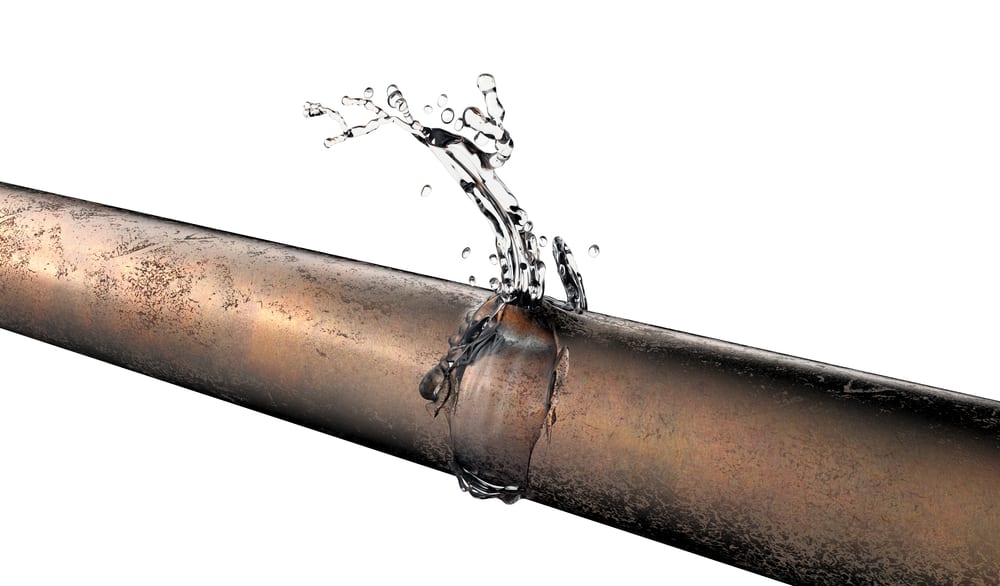Almost everyone maintains their own individual thinking when it comes to Leaking water lines.

Early detection of leaking water lines can reduce a prospective disaster. Some tiny water leaks might not be visible.
1. Examine the Water Meter
Every residence has a water meter. Examining it is a guaranteed manner in which helps you discover leaks. For starters, switch off all the water sources. Make sure no one will certainly purge, utilize the tap, shower, run the washing device or dishwashing machine. From there, most likely to the meter and watch if it will certainly transform. Considering that nobody is using it, there should be no activities. If it moves, that indicates a fast-moving leak. Likewise, if you detect no changes, wait an hour or 2 and examine back again. This indicates you might have a slow leak that might even be underground.
2. Inspect Water Usage
Examine your water expenses and track your water usage. As the one paying it, you must observe if there are any inconsistencies. If you spot sudden changes, regardless of your consumption being the same, it means that you have leaks in your plumbing system. Bear in mind, your water expense should drop under the exact same range on a monthly basis. An abrupt spike in your bill suggests a fast-moving leak.
A stable increase every month, even with the very same behaviors, shows you have a slow leak that's also slowly escalating. Call a plumber to completely inspect your residential property, particularly if you feel a cozy area on your floor with piping beneath.
3. Do a Food Coloring Test
When it comes to water consumption, 30% comes from commodes. If the color in some way infiltrates your bowl during that time without flushing, there's a leakage between the container and bowl.
4. Asses Outside Lines
Don't forget to check your outside water lines as well. Must water seep out of the link, you have a loose rubber gasket. One tiny leakage can throw away tons of water and also increase your water costs.
5. Assess the situation as well as examine
Home owners must make it a habit to inspect under the sink counters as well as also inside cabinets for any kind of bad odor or mold and mildew growth. These 2 red flags suggest a leakage so punctual interest is needed. Doing routine inspections, even bi-annually, can save you from a major problem.
If you know your home is currently old, maintain a watchful eye on your heaters, hoses, pipelines and so on. Check for discolorations and weakening as many pipelines and devices have a life span. They will additionally normally wear away because of tear and also use. If you think leaking water lines in your plumbing system, do not wait on it to escalate. Call a professional plumber today so you do not end up with a terrible mess in your house.
Early detection of dripping water lines can mitigate a possible disaster. Some little water leaks might not be noticeable. Inspecting it is a proven way that assists you uncover leaks. One little leak can lose loads of water and also spike your water expense.
If you presume leaking water lines in your plumbing system, don't wait for it to rise.
WARNING SIGNS OF WATER LEAKAGE BEHIND THE WALL
PERSISTENT MUSTY ODORS
As water slowly drips from a leaky pipe inside the wall, flooring and sheetrock stay damp and develop an odor similar to wet cardboard. It generates a musty smell that can help you find hidden leaks.
MOLD IN UNUSUAL AREAS
Mold usually grows in wet areas like kitchens, baths and laundry rooms. If you spot the stuff on walls or baseboards in other rooms of the house, it’s a good indicator of undetected water leaks.
STAINS THAT GROW
When mold thrives around a leaky pipe, it sometimes takes hold on the inside surface of the affected wall. A growing stain on otherwise clean sheetrock is often your sign of a hidden plumbing problem.
PEELING OR BUBBLING WALLPAPER / PAINT
This clue is easy to miss in rooms that don’t get much use. When you see wallpaper separating along seams or paint bubbling or flaking off the wall, blame sheetrock that stays wet because of an undetected leak.
BUCKLED CEILINGS AND STAINED FLOORS
If ceilings or floors in bathrooms, kitchens or laundry areas develop structural problems, don’t rule out constant damp inside the walls. Wet sheetrock can affect adjacent framing, flooring and ceilings.
https://www.servicemasterbyzaba.com/blog/how-to-detect-water-leakage-in-walls/

Do you enjoy more info about Detecting hidden plumbing leaks? Post a comment down below. We will be glad to know your suggestions about this review. We hope that you visit us again later on. Sharing is good. You won't know, you may be helping someone out. Thank you for your time. Don't forget to check up our website back soon.